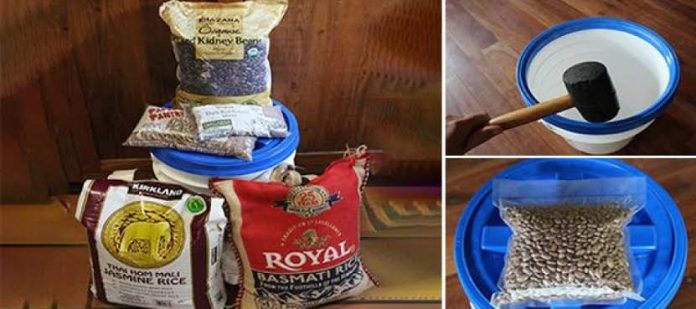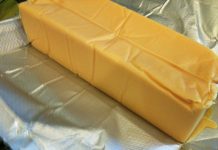If you’re just getting started with your food preps, a homemade $20 emergency food bucket is a great way to put up a lot of food quickly without spending a lot of money. Pre-made bucket kits can sell for as much as $200 online, and with a little bit of time and forethought, you can build one yourself for a tenth of the cost.
A single 5-gallon bucket can hold a month’s worth of food for one person. Imagine a month’s worth of food security, shelf-stable for 25 to 30 years, all with only a small investment in time, money and space. Easy enough. Here’s how to get started.
Choosing the Right Food
Your bucket will only last as long as it’s the most perishable ingredient. Start by choosing foods that have a long natural shelf life and are calorie and nutrient-dense so that they take up minimal space. While whole grains like brown rice may be great for your health, they contain natural oils that go rancid after about 6 months of storage.
Most people assume that white rice is all starch and empty calories, but a single pound contains roughly 1,650 calories and 32 grams of protein. An average adult needs 45 to 60 grams of protein per day, so that pound of rice is not just a great source of calories. It’s also providing at least half of your daily protein.
Rice is a great foundation, but for a balanced diet, you’ll need beans as well. Beans and rice is eaten together are a complete protein and provide all the nutrition you’ll need out of a month of emergency food. While that may sound bland, know that there are literally dozens of varieties of both beans and rice that are inexpensive and easy to come by. Choose a variety you’re familiar with and enjoy.
Related: 11 Food Storage Lessons Learned from WWI
Balancing Cost and Quality
While it may be tempting to buy the absolute cheapest option available, keep in mind that if you find yourself actually consuming the contents of your bucket in an emergency, you may regret that 85 cents you saved. If you shop around, you can find options that are both cheap and tasty.
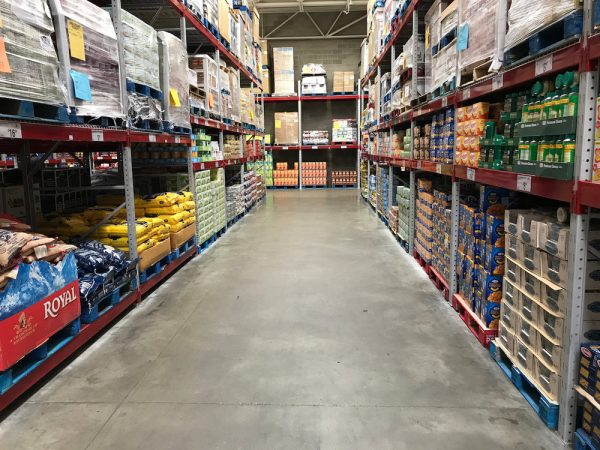

A few minutes in the bulk grain aisle of a warehouse store like Costco or Sams Club, and you’ll notice that there’s a pretty big variation in price by variety. Bargain basement white rice sells for as little as 30 cents per pound, but choosing something with a bit more flavor like basmati or jasmine rice increases the price to in the neighborhood of 50 cents per pound, and a few options sell for as much as 80 cents per pound.
A 5-gallon bucket can hold between 30 and 35 pounds of rice, so choosing a 25-pound sack of mid-grade rice at 50 cents per pound sets you back about $12.50 but fills the majority of your bucket, leaving money to spare for other essentials like beans, salt and comfort items like drink mixes. Or, choose to go cheap with your rice at 30 cents per pound, spend a bit less and buy nicer beans. Take your pick.
Long Term Storage
Proper storage is key to ensuring your food is in good condition no matter when you need it. Even foods that have a long natural shelf life need a little help to stay fresh as long as possible. In an ideal world, you’d seal your food inside a 5-gallon bucket with a strong gasket around the rim, packed in Mylar bags complete with oxygen absorbers. Vacuum sealed bags with oxygen absorbers are also a good choice. A good seal, and removing available oxygen are what ensure super long shelf life.
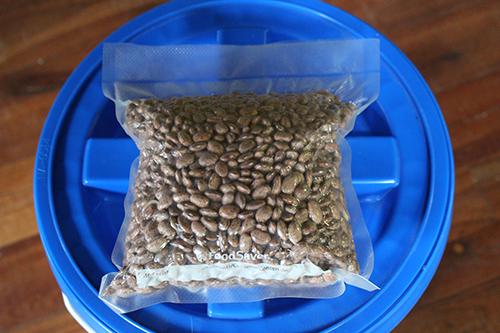

Vacuum Sealed Dry Beans
If you’re hoping to bring your costs down, even more, you can skip the Mylar bags with well-sealed buckets, but know that you’ll need to update your inventory more often to keep things fresh.
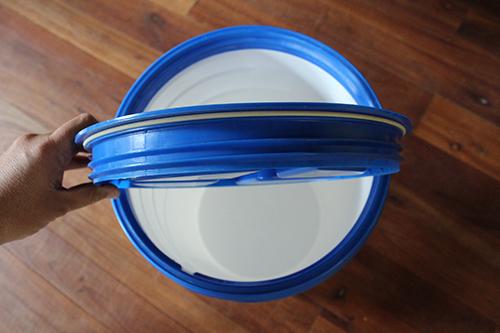

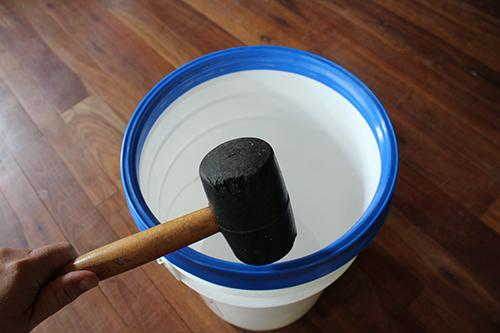

Hammer on Gamma Seal Ring
If you are using oxygen absorbers in your bucket, with or without Mylar bags, add enough for 2000 to 3000 cubic centimeters of space. The air volume will vary based on how dense your food is, and how much airspace remains. For all rice, you need 2000 cubic centimeters, so in a mixed bucket, you’ll need to budget a bit more.
Related: How To Seal Food Without A Vacuum Sealer
Packing a Survival Bucket
A pound of rice has about 1,650 calories and 32 grams of protein. Beans are almost as calorie-dense at roughly 1,550 calories per pound but contain 98 grams of protein. Bias toward rice to ensure you’re getting as many raw calories as possible.
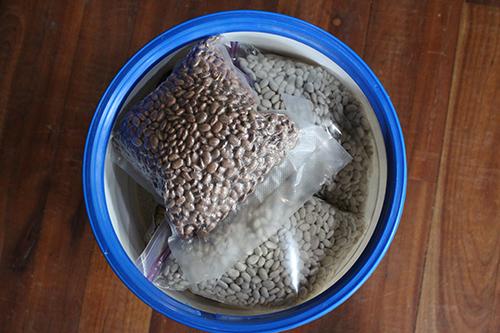

In my bucket, I’ve added:
- 25 pound sack of rice
- 8 pounds beans
- 1 pound salt
That’s it. In a pinch, that’s all you’ll need to survive, and enough salt to last you well beyond the beans and rice if you’re foraging to extend your supplies.
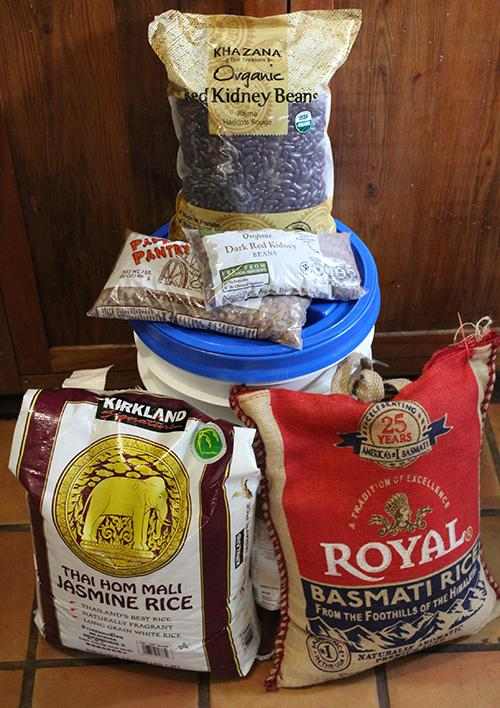

Other Considerations
Water Purification – While some survival buckets will include something to purify water, but when you’re packing beans and rice you’re making the assumption that you have a fire to cook and a pot to cook in. Beans take between 1.5 and 2 hours to cook, so you’ll need a plentiful source of fuel. With that in mind, since you’re assuming a lot of fuel anyway, it’s easier to just pack more food and assume you’ll boil your water.
If you really want something to quickly purify water, don’t choose bleach or pool shock where you’ll have to wait at least 24 hours to drink the water. Try iodine tablets, which are quick and easy, provide iodine, and sanitize water for immediate consumption.
Firestarters – Since you’ll need to cook to utilize your bucket, it’s a good idea to have some way to start a fire. If the electricity is out and you’re bugging in, a propane stove will still work so long as you have a way to ignite the burner. If you end up out of your home, an easy means of fire starting will come in handy to cook your preps.
Cooking Utensils– A stainless steel cooking pot, properly nested in with the rice, won’t take up much space in your bucket and will ensure that you have a good pot to use with your food stores no matter where you find yourself cooking. Also include a well-fitting lid and a spoon, both stainless steel.
Shelter – A reflective survival blanket or poncho also doesn’t take up much space, and may just save your life if the weather is particularly wet, or can be used as shade in the desert. Consider your climate and think about any small items that may help you adapt in a pinch.



